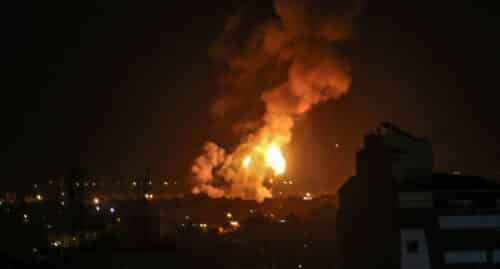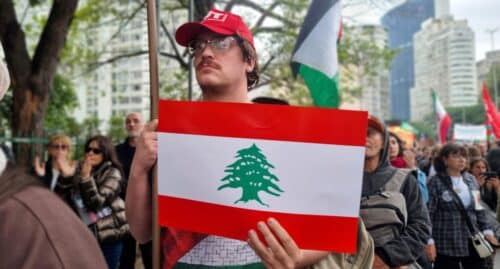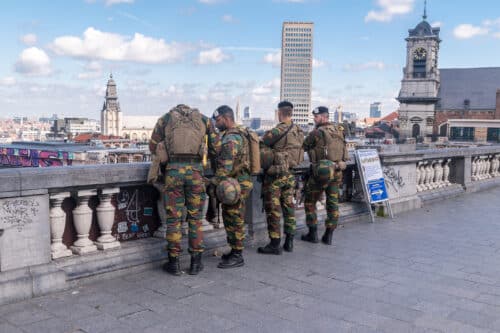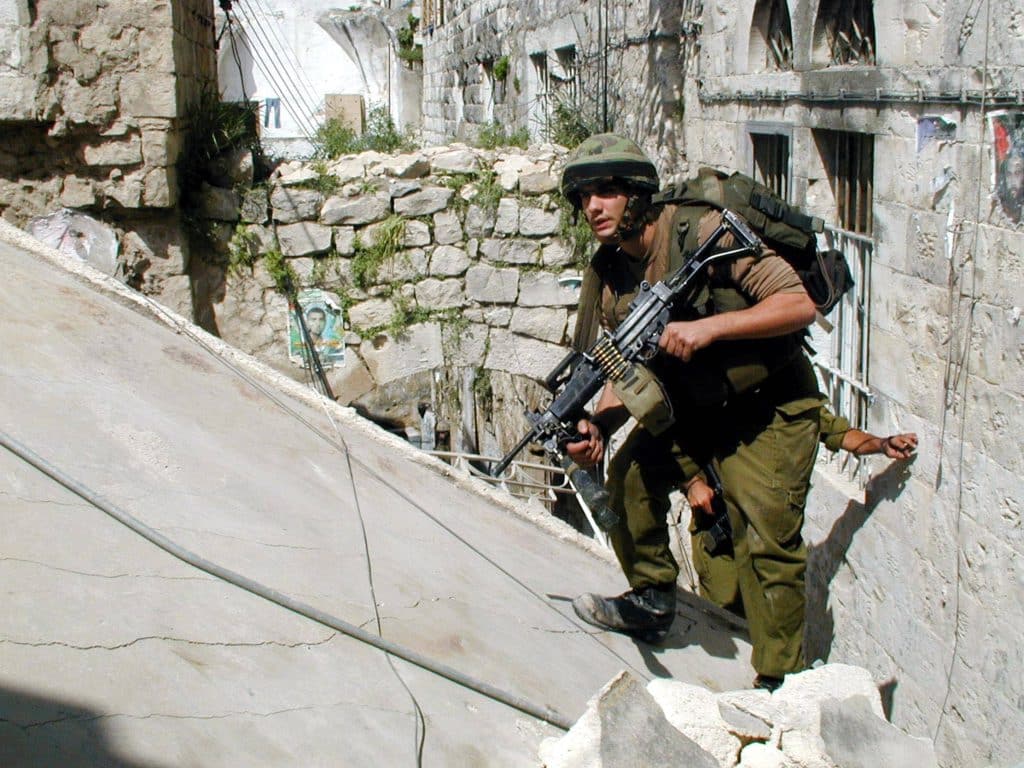
Of all the blood-soaked months of the second Intifada, March 2002 was the deadliest of them all. In fact, this was the deadliest month in the entire history of Palestinian terrorism until October 2023, with the lives of 105 civilians and 26 soldiers lost. Barely a day went by that month with out a terrorist attack, culminating in the attack on the Park Hotel in Netanya on the Passover Eve, which claimed the lives of 30 victims and injured 160 more.
Following this brutal attack, in which many family members and elderly people were murdered, some of whom were Holocaust survivors, the Government decided, in a meeting the day after the holiday, to embark on a comprehensive operation to eradicate terrorism in Judea and Samaria. This began immediately on the morning following that meeting, on March 29, 2002.
The Goal: “Hit anyone that takes up arms”
The then-Prime Minister, Ariel Sharon, defined the operation’s goals:
“To enter the towns and villages that have become terrorist safe havens; to capture and arrest terrorists and in particular those who send them and those financing them and providing them with cover; to capture and seize weapons and munitions aimed at attacking Israel; to expose and destroy terrorist infrastructures, bomb-making labs, weapon-making facilities and hide-outs. The orders are clear: to hit anyone taking up arms and to neutralize whoever attempts to resist the forces in their tasks and put them in harm’s way, and to avoid harm to the civilian population.”
The operation was given its name by Colonel Gal Hirsch, who was then the Operations Officer in the Central Command. It was taken from a poem by Poet Haim Heffer, “Between Boundaries”: “To the Poor and the Aged / we are a Defensive Shield”. Some 25 thousand soldiers were called up under “Order 8”, and the response rate exceeded 100% with soldiers competing for rides to the rallying centers.
How Marwan Barghouthi was Captured
Where did the IDF wage battle? In all the Judea and Samaria cities with the exception of Jericho and Hebron.
In Ramallah the IDF laid siege to the Mukataa complex – the government complex and official residence of the Head of the Palestinian Authority – which resulted in Yasser Arafat barricading himself within the compound along with a few wanted men. When the forces combed the building, they found a large arms cache and documents indicating Arafat himself had approved terrorist attacks. Among the documents was also a document which became known as the Shobaki Document – an invoice written out by the Authority’s financial official, Fouad Shobaki and signed by Arafat himself, containing direct payments made for launching terrorist attacks and also financial support for shahid families. The document was one of many found, which were indicative of the deep involvement of the Palestinian Authority in terrorism.
Following the IDF siege, the Americans intervened and an arrangement was reached according to which those wanted for the murder of Minister Rehavam Zeevi would be turned in and transferred to a prison in Jericho. Besides that the entire fighting apparatus of the terrorist organizations in Ramallah collapsed and, toward the end of the operation Marwan Barghouthi was also captured. Barghouthi had been leader of the Tanzim – the military wing of the Fatah organization – an organization that had orchestrated many terrorist attacks within Israeli territory. Barghouthi is still imprisoned in Israel after having been sentenced to five life sentences.
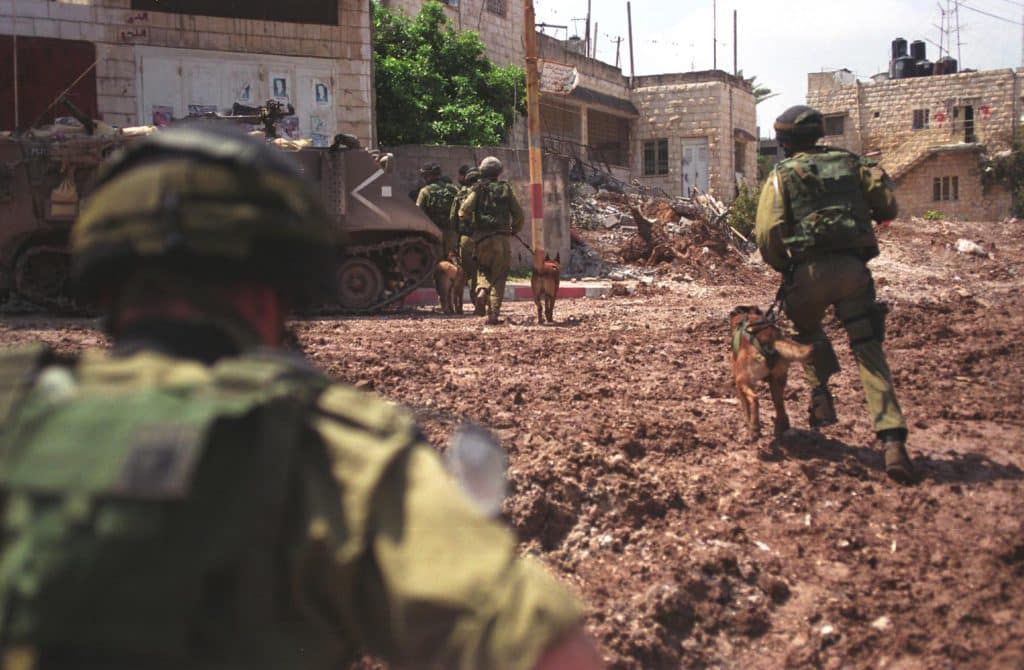
“Walking through walls”
In Nablus, the IDF purposely began operations belatedly, on April 5, so as to attract to it terrorists who thought the IDF was avoiding operations in the city. To deal woth the threat of snipers and ambushes in the crowded narrow alleys in the Nablus kasbah, the IDF developed a new strategy of “walking through walls”. This involved breaking through house walls using cold means (sledgehammers, for example) and hot means (explosives), thereby advancing through the homes rather than through the streets and alleys. The bulk of the fighting in Nablus was conducted this way. The operation ended with a decisive IDF victory with dozens of dead terrorists, dozens more in custody and large quantities of weapons and munitions captured.
In Jenin, on the other hand, the bitterest of battles took place. The terrorist organizations had booby-trapped the camp with IEDs and had prepared ambushes in the town’s narrow alleys. The IDF suffered many casualties and progress was slow. Following a deadly ambush on April 9, which cost the lives of 13 reserve soldiers from the Nahshon battalion, a decision was made that when a home was suspected of harboring terrorists, warning would be given to enable the terrorists to turn themselves in. Following that the house would be demolished using armored D9 bulldozers. This tactic smoked out dozens of terrorists, including some senior ones, who turned themselves in to the IDF forces.
In Bethlehem, after the city was captured and many wanted men were arrested, a group of 38 wanted men barricaded themselves inside the Church of the Nativity which, according to Christian tradition is located above the manger in which Jesus was born. The armed men took with them as hostages dozens of monks and some 200 civilians, including children. The world issued condemnations and warnings to Israel not to harm the site, which is one of Christianity’s holiest. Following a stand-off that lasted more than a month agreement was reached in which the 13 senior wanted men would be exiled, the 26 others would be banished to Gaza and the hostages would be released.
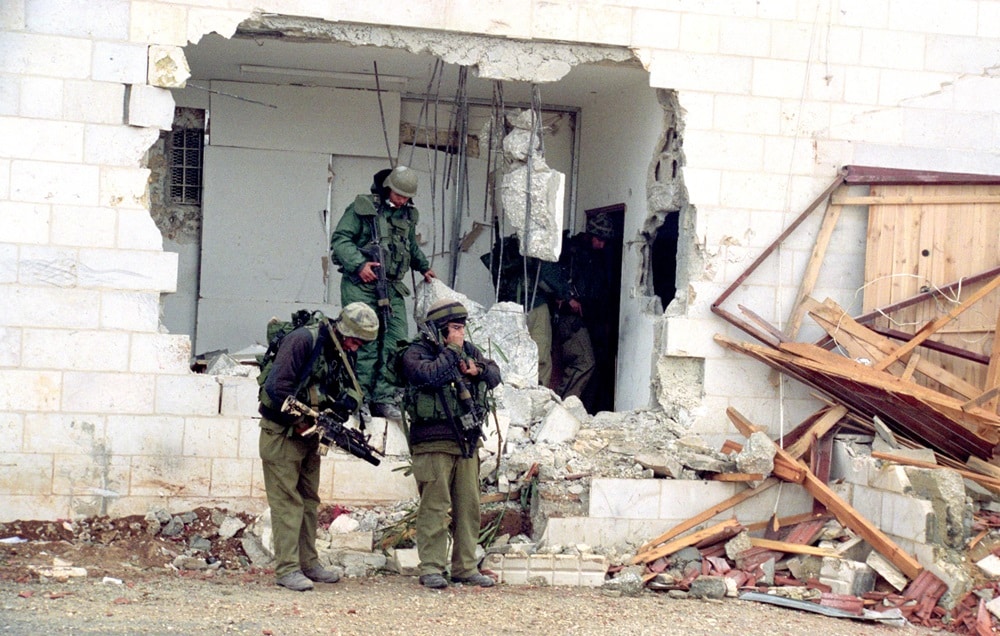
The achievement: restoring the IDF’s freedom of operation
The operation lasted six weeks until May 10, 2002. It resulted in the destruction of the operational infrastructure of the Tanzim and the Hamas in Judea and Samaria. Additionally, the Palestinian Authority was disarmed and the symbols of its authority, including the Mukataa, were demolished. The main accomplishment, nevertheless, was the restoration of the IDF’s freedom to operate throughout the entire area of Judea and Samaria and improvement of the intelligence grip on the ground.
After the operation, the members of the Tanzim told their Shabak interrogators that they had no idea of the true force of the IDF until they confronted its soldiers face-to-face. Until then aerial bombing was proof to them that the Israelis were too scared to fight them (from: Ofer Shelach, Maariv, December 26, 2008).
The operation cost the lives of 28 soldiers and members of the security forces in Judea and Samaria. Three more were killed in the Gaza Strip. 185 were injured, seven severely. Some 200 Palestinians were killed, 56 wanted men were captured, ten potential suicide bombers and thousands more suspects were arrested. 50 bomb-making labs were destroyed and large quantities of ammunition were seized.

